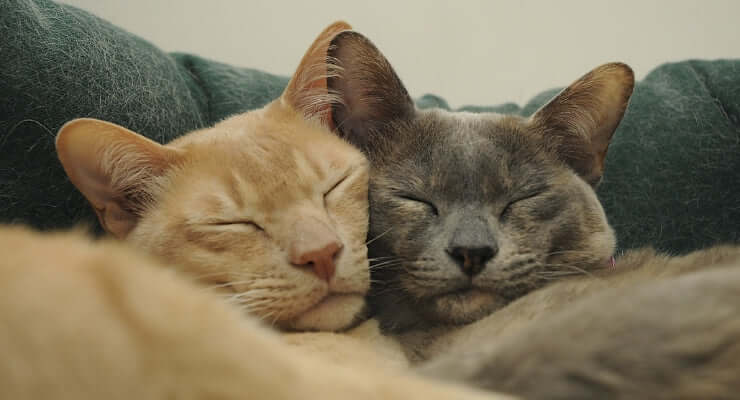
How To Do A Peaceful Cat-To-Cat Introduction
Many people believe, that if you place two stranger cats into a room together, they'll just "work it out".That is a terrible idea and can end up pretty bad. Being the awesome unique animals they are, they require a gradual introduction.And that might take some time and patience.The two cats are placed in positions where they’re either the resident cat faced with a newcomer cat or they’re the new one moving into an existing cat’s territory. Imagine...it's probably not easy to be in either shoes. Both cat's feel threatened and stressed out about the situation and to avoid them reverting to survival mode (panic,fighting,spraying) we have to make them feel as safe and comfortable as possible.
1.Set up an isolation room
The isolation room for your new cat should have all the necessary cat furniture and supplies like a litter box, food/water bowls, some cozy hiding places, a scratching post and toys.
While the cat's wont be able to see each other, they should be able to smell and hear each other. You can do this by feeding both cats their food or treats near the door to the safe room, so they learn to associate the smell and sound of each other with a positive experience (food!).
2. The sock method
If things are going well and the cats are not hissing at each other through the door, you are ready for the next step. Take a clean sock and gently rub it on the newcomer cats face, so it takes on facial pheromones. Pheromones are scent chemicals that are released from a cat’s scent glands. The pheromones around the cat’s face are basically “friendly” pheromones, that they usually rub on places where they feel comfortable. By using the sock method, we’re going to create a simulated cat that contains lots of friendly pheromones. After rubbing the sock on the newcomers face, we place it in the resident cats territory, so that he/she can investigate it and slowly get used to the new cats scent. You can encourage any positive or even neutral behavior towards the sock with treats. When the resident cat seems comfortable after a day or so, rubb his/her face with the sock and place it in the new cats isolation room and do the same thing as before.
3. Exploration sessions
If the sock exchange went back and forth a few times, your new cat might be ready to explore the territory outside of the isolation room. For that, move the resident cat to a separate room. Some experts suggest for the cats to simply "switch", but if your resident cat is very reactive the room filled with the new cats smell can be a little too much. What is important is, that the newcomer gets a chance to explore the new territory in a safe way and to spread her scent around the environment. Best, you have a few exploration sessions each day, but always return newcomer to the isolation-room and the resident cat to his/her territory.
4. Peek-a-boo
The next step involves opening the isolation room door just a little bit while you feed the cats. It should not happen before a week. Both cats are now able see each other but there should be enough space between them so they don’t feel threatened. If you have baby gates they can't jump on or walk through, you can also use these as a barrier. Make a lot of these food and peek-a-boo sessions but keep them short.
5. Ready?
There is no rule for when it's time for the cats to actually meet. Do they seem comfortable eating close to each other? If one cat seems comfortable and the other doesn't, follow the pace of the uncomfortable kitty. Don't rush it. If you decided it's time for them to meet, don’t worry if the cats completely ignore each other or hiss a bit and then walk away. It will still take some time for them to get used to each other. If you realized it was too early and the cats are not getting along at all, try to go back a step or two.
Cats naturally find it difficult to share food, sleeping areas and places to toilet, even if they are good friends. While cats may come together to feed and sleep, it is usually because they have to. To avoid unnecessary tension, still make sure to give the cats enough opportunities to spend quality time alone, release energy and play. Set up food-dispensing toys, climbing and scratching opportunities and make sure to have more than one food and water bowl as well as separate litter boxes.
Do you have experience with introducing cats to each other? Let us know about it in the comment section!
Sources:
https://ww.petfinder.com/cats/bringing-a-cat-home/cat-to-cat-introductions
http://www.catbehaviorassociates.com/how-to-introduce-a-second-ca t/
https://www.bluecross.org.uk/pet-advice/introducing-cat s

Leave a comment